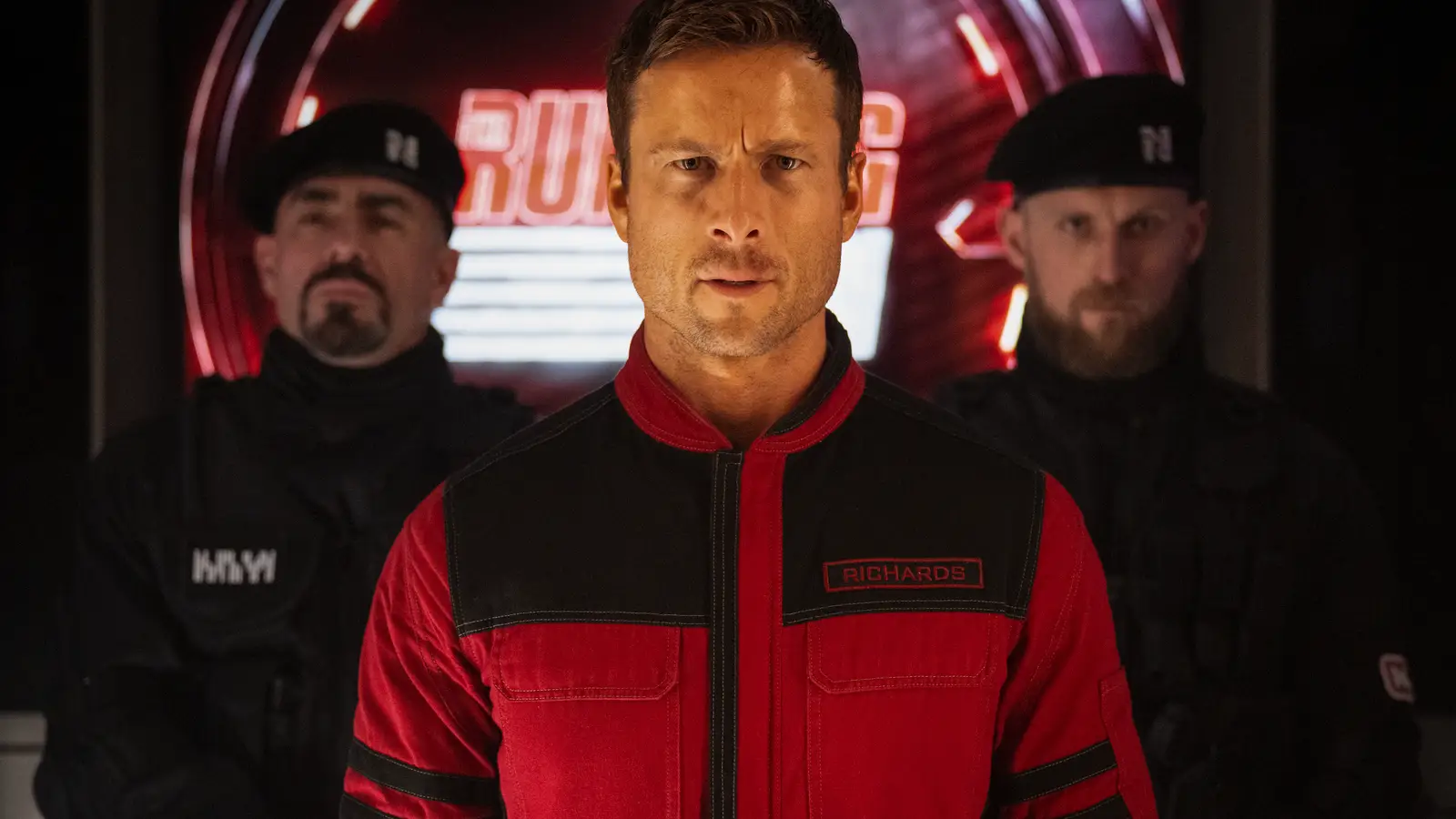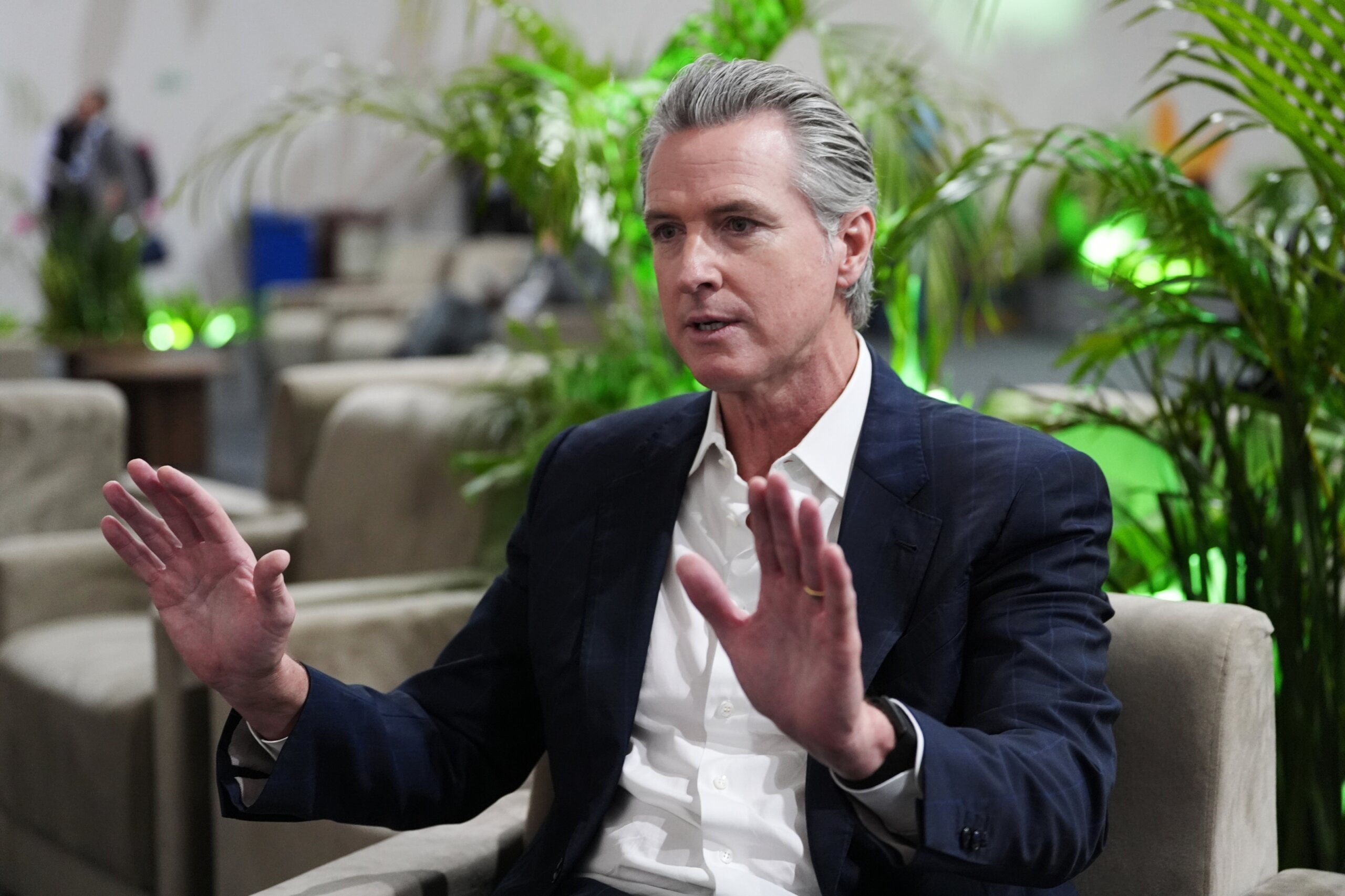Copyright Polygon

In the early 1970s, Stephen King had a dark vision of the far-off future: the year 2025. He imagined a sharply divided society of haves and have-nots, with the lower classes passively controlled by a government-operated Games Network and its flagship program, a televised competition where contestants have a chance to dig their way out of poverty by winning $1 billion — if they can survive being hunted by assassins for 30 days. That idea became The Running Man, which King published under the pseudonym Richard Bachman in 1982. (Fun fact: one of the reasons fans figured out King was the author was because he set part of the story in Derry, Maine, where It and other King stories take place.) The original novel has a distinctly science fiction tone: At the time of publication, its 2025 setting was more than 40 years in the future. For the Arnold Schwarzenegger movie released just five years later, director Paul Michael Glaser followed suit, setting the story around 2017, in a version of the future featuring rocket-sleds and then-unprecedented video deepfakes. But when Shaun of the Dead writer-director Edgar Wright decided to re-adapt King’s book, he knew he needed to take a different approach. After all, the far-off future of 2025 has arrived. “We wanted to make it feel like it was, if not the near future, a different tomorrow in a slightly alternate reality that's not too far away from our own,” Wright tells Polygon. The director behind high-concept classics like Hot Fuzz and Scott Pilgrim vs. the World takes a slightly more grounded approach with The Running Man, ditching his usual fast-paced banter and pitch-perfect needle-drops for an R-rated dystopian action-adventure that can sometimes feels depressingly relatable. Wright’s Running Man is full of AI and fake news, surveillance systems and nosy drones, Kardashian-esque influencers and conspiracy-slinging content creators. In other words, the 2025 of this movie feels a lot like the 2025 of real life. To unpack the many ways his new film captures the extremely unprecedented times we find ourselves in today, Polygon spoke to Wright about the challenges of adapting King’s original novel, the surprising way Terry Gilliam’s 1985 sci-fi classic Brazil inspired him, and how he taught his charming star, Top Gun: Maverick’s Glen Powell, to become “bad mood Glen.” This interview has been edited for brevity and clarity. Polygon: Stephen King’s The Running Man was set decades in the future, and the Arnold Schwarzenegger movie from 1987 is also firmly science fiction. But your version feels closer to home. There are sci-fi elements, but I kept thinking, This just feels like my life. Edgar Wright: Well, I hope it's not completely your life. The original story takes place in 2025, which is wild. It was published in 1982, but I only found out the other day, from talking to Stephen, that it was written in 1972. So the fact that he plucked 2025 out of the air is kind of wild. In designing the movie, we wanted to make it feel like it was, if not the near future, a different tomorrow in a slightly alternate reality that's not too far away from our own. So there's no technology in the film that doesn't exist in some form, but technology has become more advanced in the more wealthy areas, while everything else has regressed. Also in a slightly retro-futuristic way, we wanted to retain some of the analog technology as it was in the book. I always liked how in the Terry Gilliam film Brazil, it’s an ’80s film, but they have the stylings of the ’40s because George Orwell wrote 1984 in 1948. In the same way, we thought: Well, if the original book was published in 1982, what if this was a 1982 version of 2025? So that’s why you have the VHS tapes, and envelopes, and zines, and post boxes. Also, smartphones in films are boring. So just on a visual level, the less smartphones in films, the better. There’s a scene in the beginning of the movie where Glen Powell walks from the slums, where the story has taken place so far, to the rich part of town, and you suddenly realize there’s an entirely separate city hidden behind what initially looks like the security gate for an office building. How did you direct that scene to trick the audience and introduce them to this other world? Something that was very vivid to me from the book is that he leaves his apartment and he walks to the Network building. I think that only happens in cities with a grid system. Obviously people in Manhattan don't think anything of walking several city blocks. Weirdly, in London, people don't usually do that as much, because there isn’t an obvious route to walk. But there’s just something really strong about the fact that he walks to the building. He doesn't take public transport — maybe he can't afford to take public transport. He just schleps his way there. The first three scenes of the movie, before the credits, are all in windowless rooms. It's very claustrophobic, and then suddenly we’re outside and expanding the universe with all this world-building. The idea that the uptown section actually has a patrolled border was there from the start. We shot in different locations in Glasgow and London over a number of weeks to get that entire journey. Glen Powell’s character is defined by his anger. Was it difficult to get Glen, who usually plays such charming characters, into the right mindset for this role? That was something that came from the book as well, and in the book, he's a much angrier man than in our film. We wanted Ben Richards to have a lot of righteous anger. It's a good thing that he stands up to bullies and calls out injustice when he sees it. But unfortunately, in this cruel future world, he's punished for it. So he starts the movie as a very frustrated person, because he's penalized for doing the right thing. We talked about that when I cast him in the movie. I said to Glen that I needed “bad-mood Glen.” He's such a charming, funny, lovely person, I actually really enjoy seeing him lose his shit. He's got a very short fuse in the film. There's a line where Josh Brolin says to him, just before he goes on stage, “Your anger is your superpower. Use it.” So it's actually his temper that makes him the prime candidate to be on The Running Man. There’s a recurring gag in the movie where Richards will record a message to broadcast on TV, and then the network will edit it so he’s saying something else. In our current era of AI-generated video as political propaganda, it feels particularly timely. That's right from the book. There's a scene in the book, which was written in 1972, where he makes a tape, and what goes out on the TV is his words re-edited to say something different. We just took the ball and ran with it. We started working on the script in early 2022. So already at that point, there was an element of AI and deepfakes out there. But obviously it’s building and gathering momentum to the point where people believe that deepfakes are being weaponized to create fake news and post-truth and everything. So it is obviously very much in the ether. One of my favorite parts of the movie is Daniel Ezra’s character, The Apostle, who records and distributes hyper-stylized in-universe conspiracy videos about the Network. How did you develop the visual language for that? Were you inspired by any real-life YouTube videos? I don't remember watching anything specific. Maybe it’s what I've seen by osmosis. It was really fun shooting those bits with Daniel Ezra. We figured he's shooting them in his apartment with a little green-screen setup. It was actually one of the few things in the movie that didn't really have a shot list. We were kind of winging it. I wrote down the props that I needed, but mostly, it was just getting lots of bits of green paper so you could burst through things, or hold up bits of green card, or drop bits of green card, or push a bit of green card out of the way. We were wildly improvising, and I'm not sure the crew could follow it. I think they were just wondering what the hell I was doing. I will say those scenes probably took the longest to edit in the movie. Now that you’ve done The Running Man, are there any other Stephen King stories that you’d want to adapt? That is a very good question. I wish I had an answer. I think everything that I've read of his has already been made into a movie that I don't see any need to do a new version of. So I dunno. I’ll have to read all the short stories that I haven't read yet. The Running Man releases in theaters on Nov. 14.



